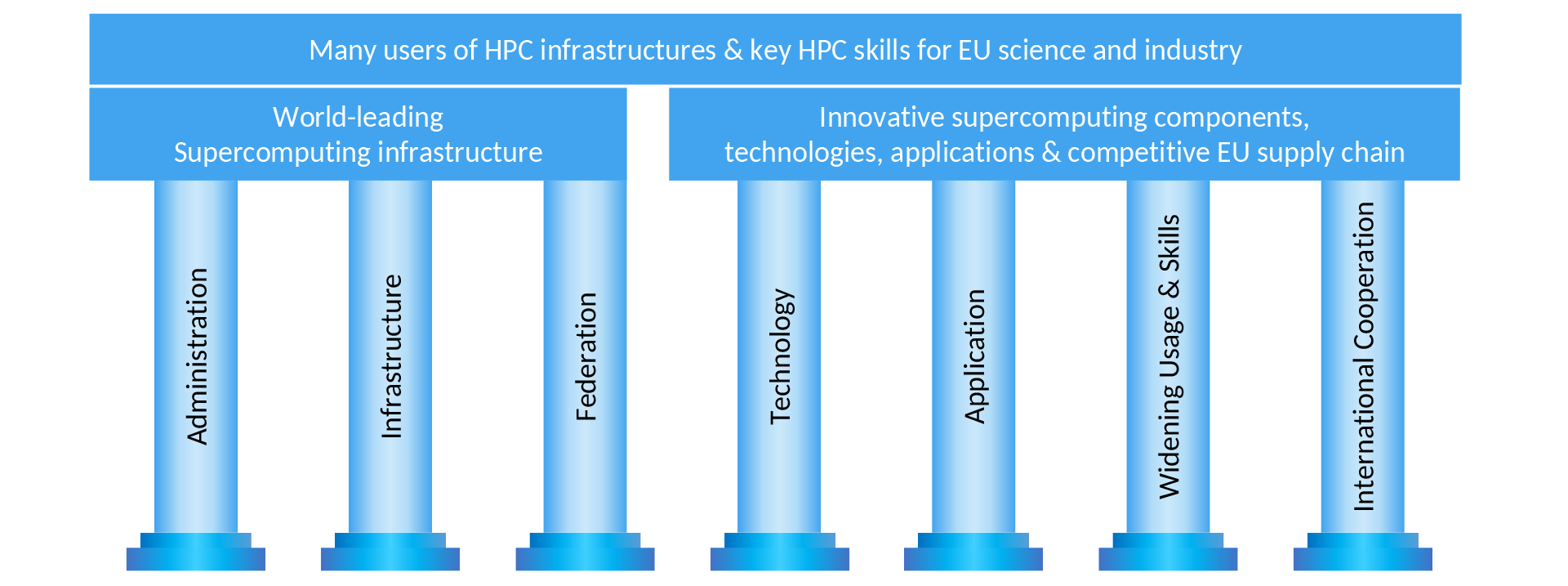Today, High-Performance Computing (HPC) is a critically important tool in academia and industry that enables discovery and validation of breakthrough scientific results, design of safe, functional and highly efficient products, and supports addressing important societal challenges (such as climate change and air pollution). HPC encompasses supercomputers (large systems optimised for highest computation capability), system-level software (often called middleware, which provides the services required for effective use of HPC systems, and for developing efficient software applications for tackling scientific, industrial or societal problems), software applications and the underlying, scalable and efficient ealgorithms. Increasingly, methods from Artificial Intelligence (mainly in Machine Learning) and Big Data complement the computation-oriented HPC systems and software.
For the European research arena, for European industry, and for the European societies, access to globally competitive HPC system infrastructure, and ability to create and operate leading-edge HPC applications is a key requirement. It is indispensable to advance science, drive towards solutions of key societal problems, boost economic competitiveness and assure European autonomy.


